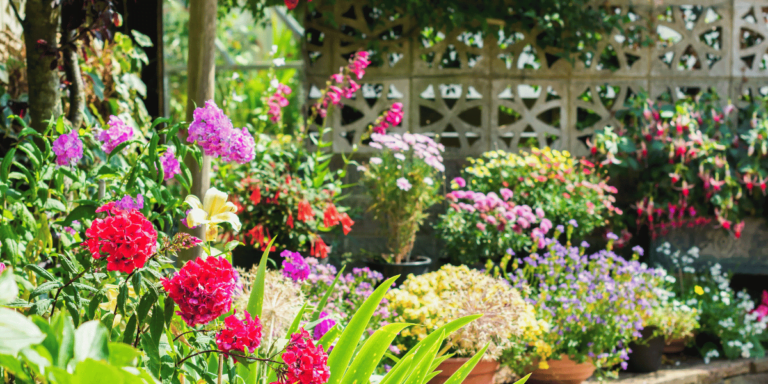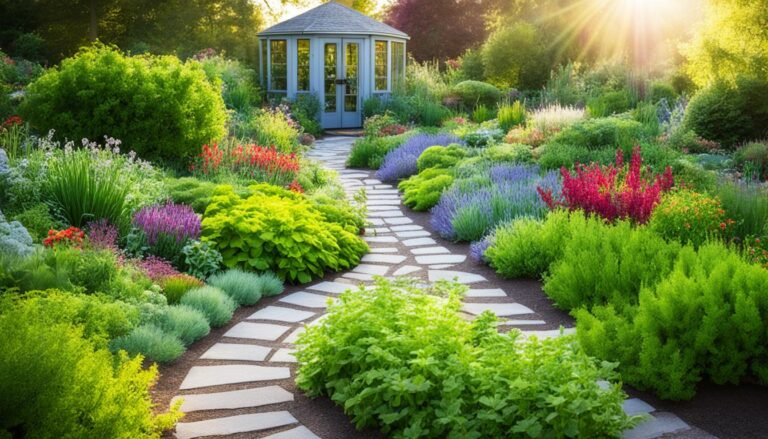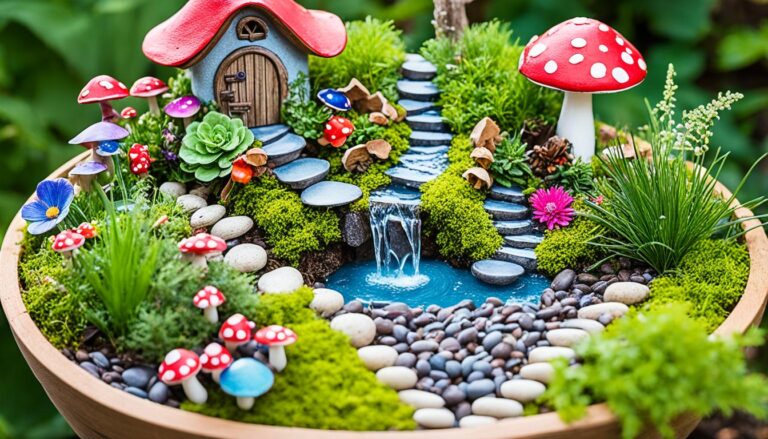Community gardening Urban agriculture has become a lifeline for city dwellers without private gardens. It lets them grow their own food, help neighbors, and make friends. The benefits of community gardening include fresh food and stronger community ties. Leaders like LaManda Joy, Geoffrey Johnson, and Collie Turner have led the way. These efforts have led to around 29,000 community gardens in major U.S. cities.
Seattle’s Beacon Food Forest is a noteworthy project. It’s the world’s first open-foraging urban food garden. It’s open 24/7. This and similar projects turn empty city spaces into useful, friendly areas. They not only provide food but also educate about sustainability.
Key Takeaways
- Community gardening help city residents grow their own food.
- Figures such as LaManda Joy and Geoffrey Johnson are key to the gardening movement.
- Seattle’s Beacon Food Forest leads as a 24/7 urban garden for everyone to forage.
- Around 29,000 community gardens exist in large U.S. cities.
- These gardens better neighborhoods and offer chances to learn.
What is Community Gardening?
Community gardening is about managing open shared spaces. Gardens can be as small as a pot or as big as a field. Members work and enjoy the gardens together. These shared gardens have a long history in North America. They became important during the industrial revolution and wars, as well as in the 1970s due to the OPEC crisis. Today, they range from small victory gardens to large projects that fight hunger.
Usually, volunteers run these gardens. They follow certain rules to meet everyone’s needs. Gardens may be public or private. They help a lot in cities where fresh food is hard to find, known as “food deserts.” This makes them key in the local food movement. Also, they aid in fighting climate change, improving health in cities, and reducing the use of fossil fuels.
There’s a wide range of garden sizes. For example, in Britain, plots are about 40 square poles on average. In America, garden sizes can vary a lot. In Canada, they’re usually either 20×20 feet or 10×10 feet. Gardens are often placed on private land that was not being used. They are found in many places, like neighborhoods, schools, and hospitals. The location is important for making them easy to reach for everyone.
These gardens do more than just provide food. They help us eat healthier and keep fit. Gardening together brings people of all backgrounds closer. For example, veterans and students may join to grow food for themselves or others in need. Thus, these spaces help build a strong community and support the local food movement’s big goals.
| Region | Typical Plot Size |
|---|---|
| Britain | 40 square poles |
| America | Varies |
| Canada | 20ft x 20ft or 10ft x 10ft |
The Environmental and Health Benefits of Community Gardens
Community gardens bring big benefits to our environment and our health. They are places where we can improve the planet, get healthier, and feel good through gardening. These spaces combine doing something good for the earth with enjoying nature and improving your state of mind.
Environmental Cleanup
Community gardens are key for cleaning up the environment. They breathe new life into unused or damaged areas. By growing plants, they make the air cleaner and reduce harmful pollutants. They also help manage dirty street water, keeping our water bodies cleaner. This all shows how they play a vital role in keeping our planet healthy.
Physical Health Benefits
Getting into community gardening helps you live a better, healthier life. It gets you moving with tasks like planting, pulling weeds, and watering. And you get to eat fresh food that’s good for you, thanks to what you grow. Adults eating veggies nearly four times more in these gardens highlights how it boosts healthy eating.
Mental Health Benefits
Gardening does wonders for the mind as well as the body. Those who garden together often feel happier than those doing it alone. It’s a great way to fight off stress and feel good. For some, like refugee gardeners, it heals both body and mind. Plus, it’s a place to make friends, which is great for your mental well-being too.
| Benefits | Impacts |
|---|---|
| Environmental Cleanup | Revitalizes land, improves air quality, manages runoff |
| Physical Health | Promotes exercise, provides fresh produce |
| Mental Health | Reduces stress, enhances well-being, fosters social ties |
Community gardens really step up in making our world, health, and mood better. They are truly vital for any community that wants to flourish.
Community Gardening: A Pathware to Sustainable Living
Community gardens help us live sustainably. They are all about organic gardening and making our own food. This reduces our need for big farms. These gardens also turn empty spaces into green ones, giving us fresh food where it’s not always easy to find. They also teach us about being kind to our earth and working together.
Promoting Organic Gardening
Community gardens teach us to grow without harmful chemicals. This way of farming is good for the earth and our health. It makes sure we have good food for the future. Plus, it teaches us skills that help the planet.
Encouraging Self-Sustainability
Growing our own food makes us less dependent on outside sources. It means shorter food deliveries and less pollution. It also makes us more responsible for what we eat. This is good for us, our neighbors, and the planet. It’s how we make our communities stronger and ready for anything.
Building Stronger Communities Through Gardening
Community gardening brings people together. It helps build shared goals and encourages neighbors to interact. In the U.S., there are over 29,000 community gardens. These places are not just for growing veggies. They are hubs for neighbors to connect over gardening.
When people join in gardening together, it makes the area look better. It turns dull spaces into vibrant gardens. These gardens help people relax and make friends. This leads to a healthier and happier community. Studies show that these green areas improve the health of everyone around.
Community gardens help everyone feel like they belong. This is especially true in busy cities where people might feel left out. It’s proven that these gardens make city areas nicer. They also cut down the miles our food travels, making the air and soil better.
Since 2022, the cost of groceries has gone up a lot. But, community gardens offer a way to get fresh food cheaply. They also help make areas safer. By taking care of these green spaces, people look out for each other. This makes the community stronger. It’s all about working together and taking care of our shared urban gardens.
Steps to Starting Your Own Community Garden
Starting a community garden needs good planning and working together. It brings people closer and helps the planet. Here are steps to make a community project that thrives.
Finding a Suitable Location
The first task is to find a place with lots of sun and water. The best spots are between 100 and 500 square feet. You need to think about where the water will come from too.
City areas are great for gardens, but you must check the soil and water drainage. Talking with local officials can help and get you resource support.
Organizing a Gardening Committee
Running a garden project well needs a strong team. A group of leaders helps manage different tasks. Make sure you have a president, a secretary, and a treasurer.
This way, everyone knows their role. It also means that decisions are fair and clear. The group works together to solve problems and set up agreements.
Securing Funding and Resources
Getting money is very important for a garden to start and keep going. You might need between $3,750 and $7,500 at first, plus money for insurance. Maintenance also costs money.
Working with local businesses and others can bring in funds and supplies. Look for help from shops, churches, and schools. This helps ensure the project lasts.
- Find a suitable location with proper sunlight and water access.
- Organize a structured gardening committee with clear roles and responsibilities.
- Secure funding and resources through partnership formation and sponsorships.
Choosing the Right Plants for Your Community Garden
It’s key to choose the right plants for your community garden. This choice makes sure your garden grows well and is easy to look after. Pick plants that fit with your area’s weather, how much sun the garden gets, and how often people can come to care for it.
Because not everyone can attend the garden every day, focus on plants that don’t need a lot of care. Many plants do well even if they’re not watched all the time. This makes them perfect for community gardens.
- Tomatoes: They can handle changes and don’t need too much looking after.
- Winter Squash: They last a long time and are great for keeping.
- Kale: Loves cooler weather and can even grow when it’s 20°F / -6°C.
- Eggplant: It’s easy once it starts growing.
- Swiss Chard: Can deal with different conditions well.
When planning your garden, choose plants that do well in your area and are easy for all to grow. Think about adding easy-to-grow plants like peas and lettuce, and pretty flowers. They make the garden easier to take care of and look nice. Choosing strawberries that keep producing, such as Quinault and Seascape, means you get fruit for a long time, no matter the weather.
| Plant Variety | Optimal Climate | Care Level |
|---|---|---|
| Kale | Cool climates (e.g., Pacific Northwest) | Low |
| Radishes | Cool season crops, benefit from frost | Low |
| Oregon Snow Peas | Varied climates | Low |
| Blueberries | Moist, acidic soils (varies by type) | Medium |
Many community gardeners have other tasks and little time. Choosing plants that suit the place and how often they can come will make gardening more enjoyable and successful.
Tips for Maintaining a Thriving Community Garden
Dialing in proper watering methods, taking care of the soil, and managing pests well are key for a healthy community garden. They help plants grow and keep the area productive and sustainable.
Effective Watering Techniques
Good watering practices are vital. Techniques like drip irrigation use less water but keep plants happy. Rainwater harvesting is also a great way to save water. This approach makes sure plants get the water they need without waste.
Making a set watering schedule is smart. This stops plants from getting too wet or too dry. It helps the garden thrive.
Soil Health and Fertility
The quality of a community garden’s soil is critical. It’s good to add organic fertilizers and compost regularly. This keeps the soil rich and full of the nutrients plants need. It’s also helpful to promote mycorrhizal networks. These networks boost soil health by helping plants take in nutrients and water better.
Pest Management Strategies
Keeping pests in check is a must. Using natural repellents and introducing helpful insects can protect plants without hurting the environment. Mixing up plant types and rotating crops also helps keep pests away. This keeps the garden in balance.
Using these methods, community gardens can grow strong. They become important parts of the neighborhoods they belong to. For a deeper dive into caring for community gardens, check out this guide on how to make them flourish.
Community Involvement and Engagement
Community gardens depend on volunteer participation and civic engagement. They encourage everyone in the area to take part. This happens through many different programs and events. They help people feel they belong and open up conversations, promoting unity.
In New York, the Seed to Supper project made a big impact. It involved making six videos about community gardening. These videos ask important questions about working together, diversity, and fairness. They are designed to get people talking and sharing ideas, bringing them together.
The questions are key to making everyone feel included. They take into account how people learn best and what the community needs. They highlight the team’s successes in gardening. This project makes the garden a part of the neighborhood, boosting interaction among people from different backgrounds.
Studies show that community gardens do a lot of good. They make people healthier, happier, and more connected. The best gardens keep their space secure for a long time. They have a tight-knit group of people who garden together, resources from partners, a plan made by the community, and good leadership.
After the research, 26 Extension Agents were briefed. Thanks to their work, a big $50,000 grant in Kentucky was secured. This grant helped get more people into farming and supported those recovering from substance use. It led to the “Recovery Garden Toolkit”, a guide for the best gardening methods.
Key Challenges and Solutions in Community Gardening
Community gardening is great for making an area look better and bringing people together. But, it does face some challenges. Finding smart solutions is key to tackle these issues, manage resources well, and keep the garden running smoothly.
Land and Resource Constraints
Often, there’s not enough land or resources for community gardens. To deal with this, gardens can work out deals with local officials or landowners. Also, using vertical gardening helps make the most of small areas without needing more land.
- Forming a committee to propose plans greatly increases success rates.
- Turning to local businesses for donations can ease start-up and maintenance costs.
Management and Organization
Good planning and teamwork are vital in community gardens. It’s important to have a clear plan and set duties within the gardening group for success. Regular meetings are also key to solve problems and keep everyone excited.
| Challenge | Solution |
|---|---|
| Coordination | Form a dedicated committee |
| Funding | Secure contributions from local businesses |
| Security | Install lighting and involve neighborhood watch programs |
Weather-Related Issues
Bad weather can really hurt community gardens. It’s smart to plan for this with crops and systems that can handle tough weather. For example, adding shade cloths and windbreaks can protect plants from bad weather.
- Consider crop selection for adaptability to local climates.
- Use educational resources to engage the community in problem-solving.
Getting everyone working together helps overcome garden problems and builds a strong community spirit. By following these tips, community gardens can do well and bring many benefits to the area.
Conclusion
Community gardening has been a huge success in cities. It has brought people together to garden and has made communities stronger. In a 2009 study, 42 families took part. Thirty-eight joined before the gardening season, and four more joined later. These families had 163 people in total, showing how many people got involved. The ages of those joining ranged from 21 to 78, which shows a diverse group took part.
Community gardens have also helped improve what people eat. The amount of adults eating vegetables several times a day went up from 18.2% to 84.8%. For kids, this number went from 24.0% to 64.0%. There was also a big drop in how many people worried about food running out, from 31.2% to 3.1%. Even though gardening helped with some food worries, it didn’t completely solve money problems people faced.
Overall, community gardening is a big help, improving urban areas and building connections among people. Local support is key to overcoming obstacles. These gardens encourage looking after our environment and working together for a healthy community. They make places better, instill pride, and care for the planet.

















